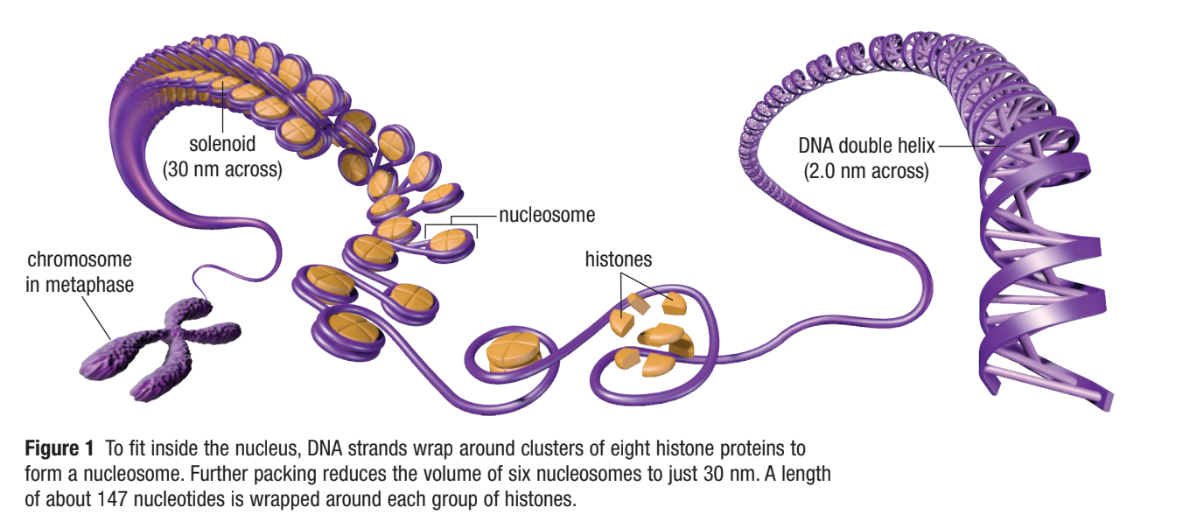Unit 2: #2 Genetics: DNA Replication
1/14
There's no tags or description
Looks like no tags are added yet.
Name | Mastery | Learn | Test | Matching | Spaced |
|---|
No study sessions yet.
15 Terms
What is the replication of DNA considered?
Replication is semiconservative
Determined by Meselson and Stahl (1958)
What is the semiconservative model?
Two strands of parental DNA separate
Each strand is template for synthesis of a new complementary strand
New strand is attached to old strand so half is always from the original

What are the three proteins involved in replication?
Before replication begins, the two strands of DNA must be unraveled and kept separate
DNA helicase
Unwinds the double helix by breaking the hydrogen bonds between the base pairs
Single stranded binding proteins (SSBs)
Keeps the two strands apart, blocks H-bonding
Topoisomerases
Enzymes that relieves tension from DNA unwinding
Cuts both strands of DNA, then reseals cut strands
Process of DNA Replication
Replication begins at special sites called origins of replication
Two strands open up a replication “bubble”
Replication proceeds in both directions from bubble
Multiple replication bubbles form and fuse into each other
At each end of the replication bubble is a replication fork
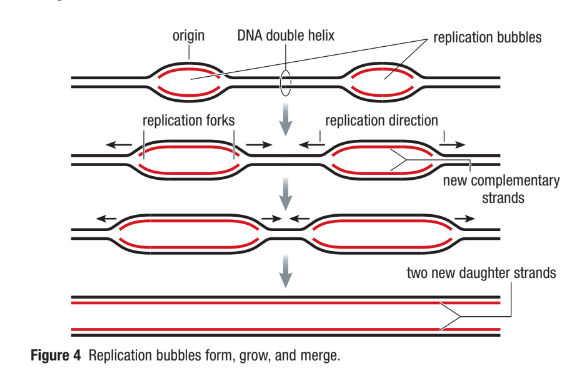
Replication Fork
*Y-shaped region where new strands of DNA elongating, where two strands of “old” DNA are still attached
Replication proceeds towards the fork on one strand and away from the fork on the other strand
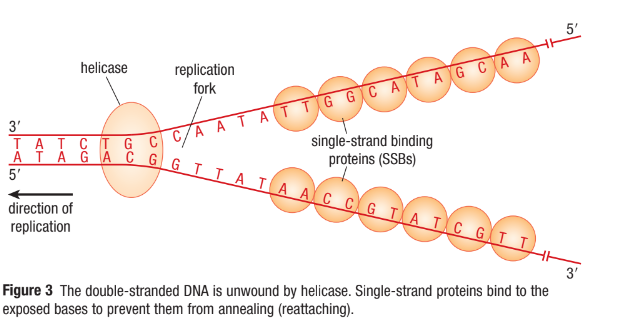
How are the complimentary strands built?
DNA Polymerases
Enzymes function in DNA replication and repair
DNA Polymerase III
Enzyme builds the complementary strand using template strand as a guide
Adds complementary strand in 5’ to 3’ direction
Needs an RNA primer as a starting point

RNA Primers
Made by enzyme primase
10-60 nucleotides attached to template strand temporarily
Allows DNA Polymerase to begin elongation by adding free deoxyribonucleoside triphosphates to complementary strand
Deoxyribonucleoside Triphosphates
Similar to ATP
Deoxyribose instead of ribose sugar
Located in nucleus
Used by DNA Polymerase III to build complementary strand
Two phosphates removed and remaining nucleotide added to elongating strand
Problem with Antiparallel DNA strands
DNA polymerase III adds nucleotides to the free 3’ end of growing strand (5’ → 3’ direction)
The two strands run antiparallel
Only one strand can be built continuously

What are the two strands found in DNA?
Leading & Lagging Strand
Leading Strand
Uses the 3’ to 5’ template strand as its’ guide
Formed toward replication fork
Only one RNA primer required
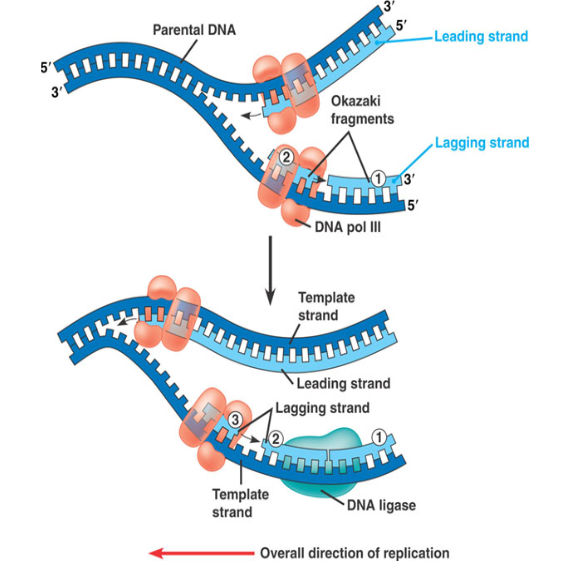
Lagging Strand
Made discontinuously in short fragments called Okazaki fragments
Formed away from replication fork
Requires an RNA Primer for each fragment

DNA Polymerase I
Removes all RNA Primers and replaces them with correct deoxyribonucleotides
Enzymes DNA Ligase joins Okazaki fragments into one strand by forming phosphodiester bonds
As new strands form attached to “old” DNA, each pair twists into helix
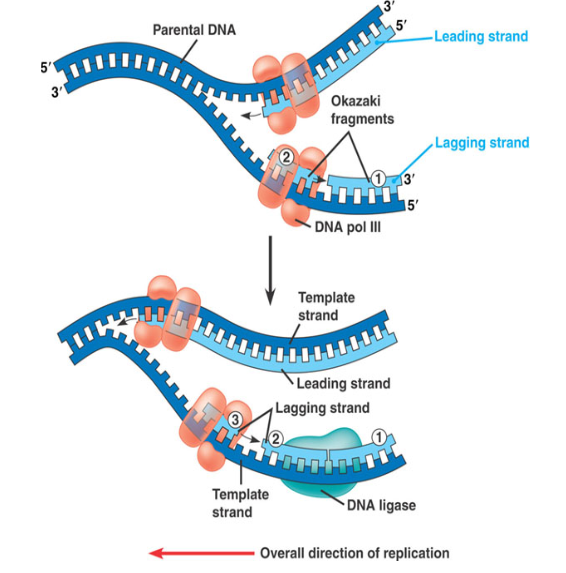
Proofreading
DNA polymerase I,II and III act as proofreaders of newly made strands
DNA Polymerase II proofreads the DNA between rounds of replication as well
When mistake is detected, an exonuclease cuts out error
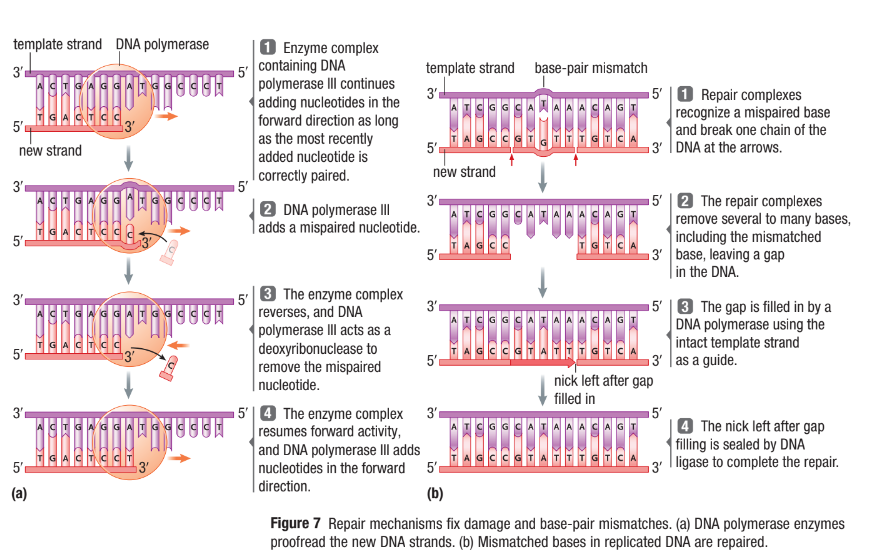
Solenoid
A group of 6 nucleosomes coiled into cylindrical fibers
Further reducing the volume of DNA
Solenoids act as strong storage units for non-coding sequences of DNA to protect it from potential damage
DNA during interphase in form of nucleosomes or solenoids
